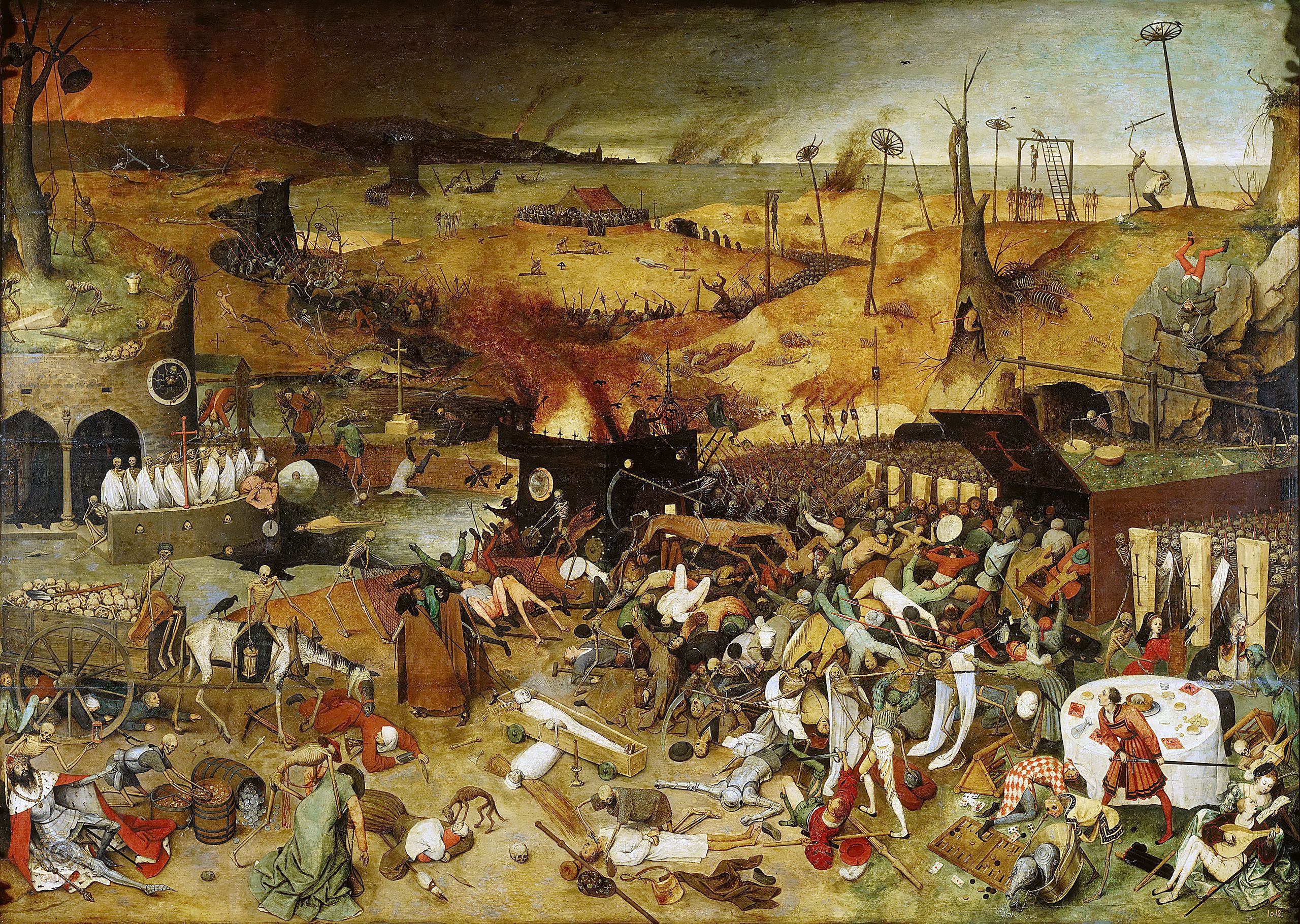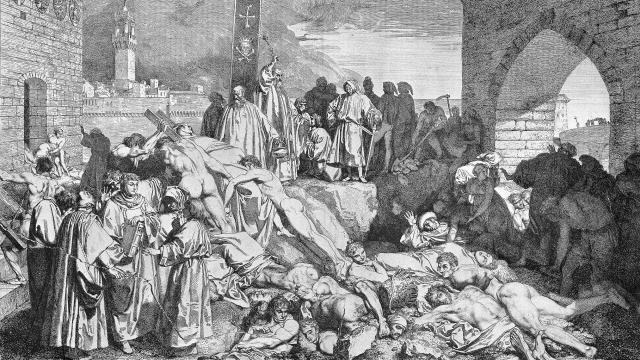The Black Death, a plague responsible for killing around a third of the population of Europe during the 14th century, spread to millions of humans by rats that carried infected fleas – right? That’s the story we’ve long been told by historians. A new study upends this conventional thinking, showing that humans, and not rodents, were the primary spreaders of the dreaded disease.
The plague of Florence in 1348, as conveyed in Boccaccio’s Decameron. (Image: Wikimedia)
The horrific Black Death, caused by the bacterium Yersinia pestis and often referred to simply as “plague“, was spread by human fleas and body lice, and not similar parasites found on rats, according to research published yesterday in Proceedings of the National Academy of Sciences. In other words, humans were primarily responsible for spreading the disease to other humans. It seems the rats were innocent, at least according to mathematical models produced by researchers from the University of Oslo and the University of Ferrara.
From 1347 to 1353, the Black Death killed an estimated 75 million to 200 million people across Europe and Asia. The disease repeatedly reared its ugly head in ongoing waves that lasted from the 14th to 19th centuries, affecting populations in Europe, the Middle East and North Africa. The disease is still around today, spreading to humans from infected fleas on rats, or through the inhalation of infectious droplets in the air.

Things got a bit rough in the 16th century, as the Black Death continued to ravage parts of Europe (Image: The Triumph of Death by Pieter Bruegel the Elder, c. 1562/Wikimedia)
Despite the fact that the Black Death wiped out a sizeable portion of the human population, little is known about the ways in which the disease spread. “While it is commonly assumed that rats and their fleas spread plague during the [Black Death], there is little historical and archaeological support for such a claim,” write the authors in the new study. That said, scientists have been studying recent outbreaks of the disease in Africa (here, here and here), showing that human fleas and lice are responsible for spreading Yersinia pestis among humans. Yes, the disease initially makes the jump from rodents to humans, but from there, human parasites take over.
This relatively recent revelation got researchers Katherine Dean, Boris Schmid and their colleagues to wonder if a similar thing happened during the Black Death. For one, the Black Death had a wider spread and was far deadlier than its predecessor outbreak, the Plague of Justinian (6th to 8th centuries). What’s more, rats actually weren’t that common in Europe during the 14th century (a claim backed by archaeological evidence). And then there’s the recent evidence from outbreaks in Africa showing that Yersinia pestis can spread among humans via human parasites.
To see if human parasites were indeed responsible for the Black Death, the researchers turned to maths. “Mathematical modelling can provide strong insight into mechanisms of plague transmission for past epidemics,” write the authors.
Using data collected from nine different plague outbreaks in Europe from the 14th through to the 19th century, the researchers modelled various scenarios to visualise how the disease may have spread. Three different transmission models were tested: Through the air (pneumonic), by infected fleas on rats, and via infected fleas and lice on humans and clothing. In several of the nine models, the researchers discovered much greater consistency and similarities with the human-spreading model – an observation that backs the “human ectoparasite hypothesis” of the Black Death.
“We have developed a compartmental model that captures the dynamics of human ectoparasite transmission,” conclude the authors in their study. “We have shown that, in seven out of nine localities, the human ectoparasite model was the preferred model to explain the pattern of plague mortality during an outbreak, rather than models of pneumonic and rat – flea plague transmission.”
But the study is not without limitations. It’s based almost entirely on mathematical modelling, so it’s showing a simulation of what might have happened, and not the real thing. Also, the models didn’t account for local conditions that can influence an epidemic, such as war, famine, immunity and public health interventions. And as the authors themselves admit, “we did not model mixed transmission routes, and this makes it difficult to fully assess the contribution of pneumonic plague, which commonly occurs during bubonic outbreaks [i.e. when spread by infected parasites].”
Ben Bolker, a mathematician and statistician from McMaster University who wasn’t involved with the study, said he’s unhappy with some of the statistical procedures used by the researchers.
“I think the way they analysed their data means that they are probably overstating the strength of evidence for the difference among models,” Bolker told Gizmodo.
So while the new result is interesting, it isn’t nearly complete. At best, it stands as a good starting block for further research that could confirm what the mathematical models suggest. Epidemics are influenced by a wide host of factors, and every region, with its own distinct population, is going to be a little different.
